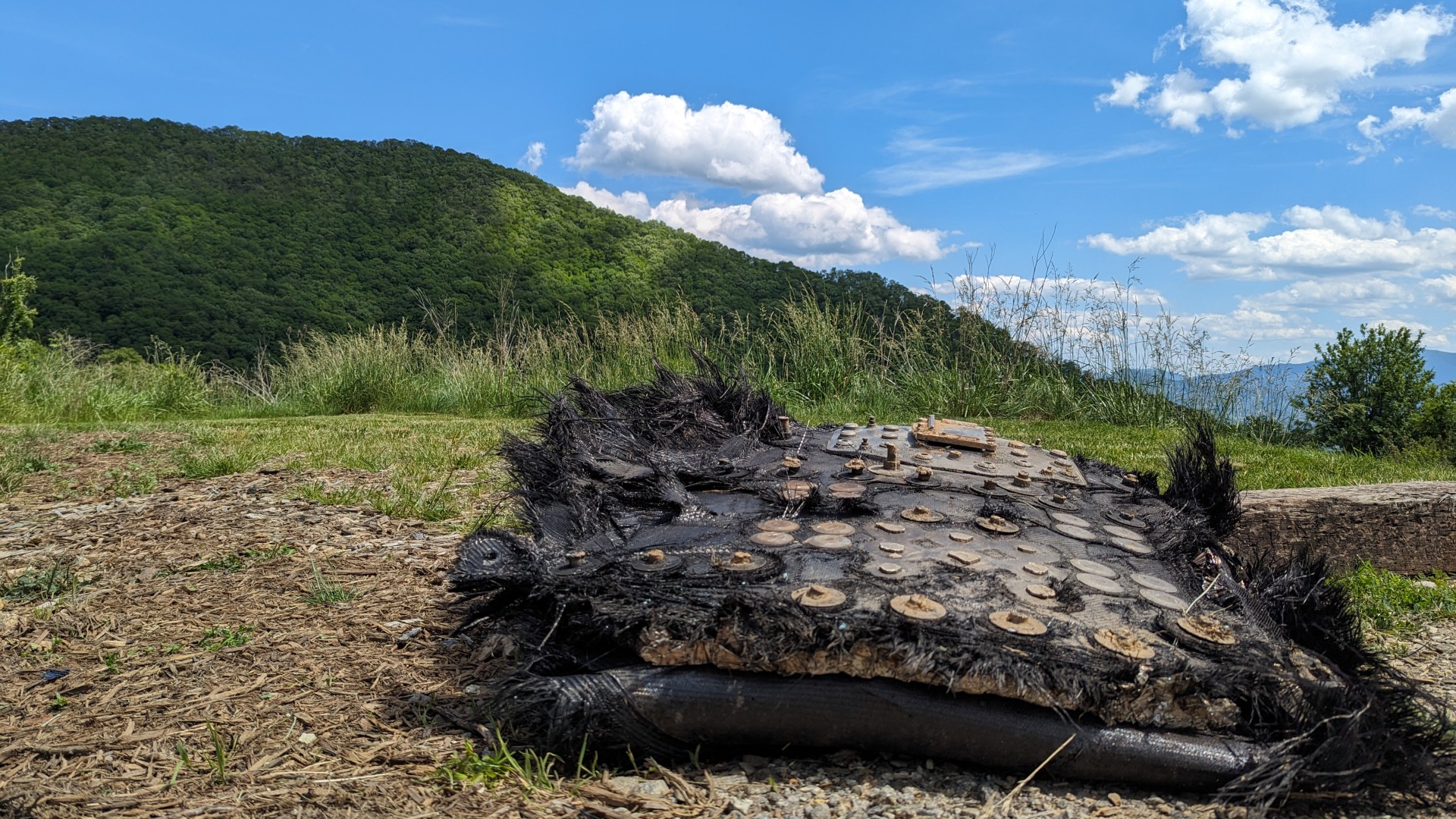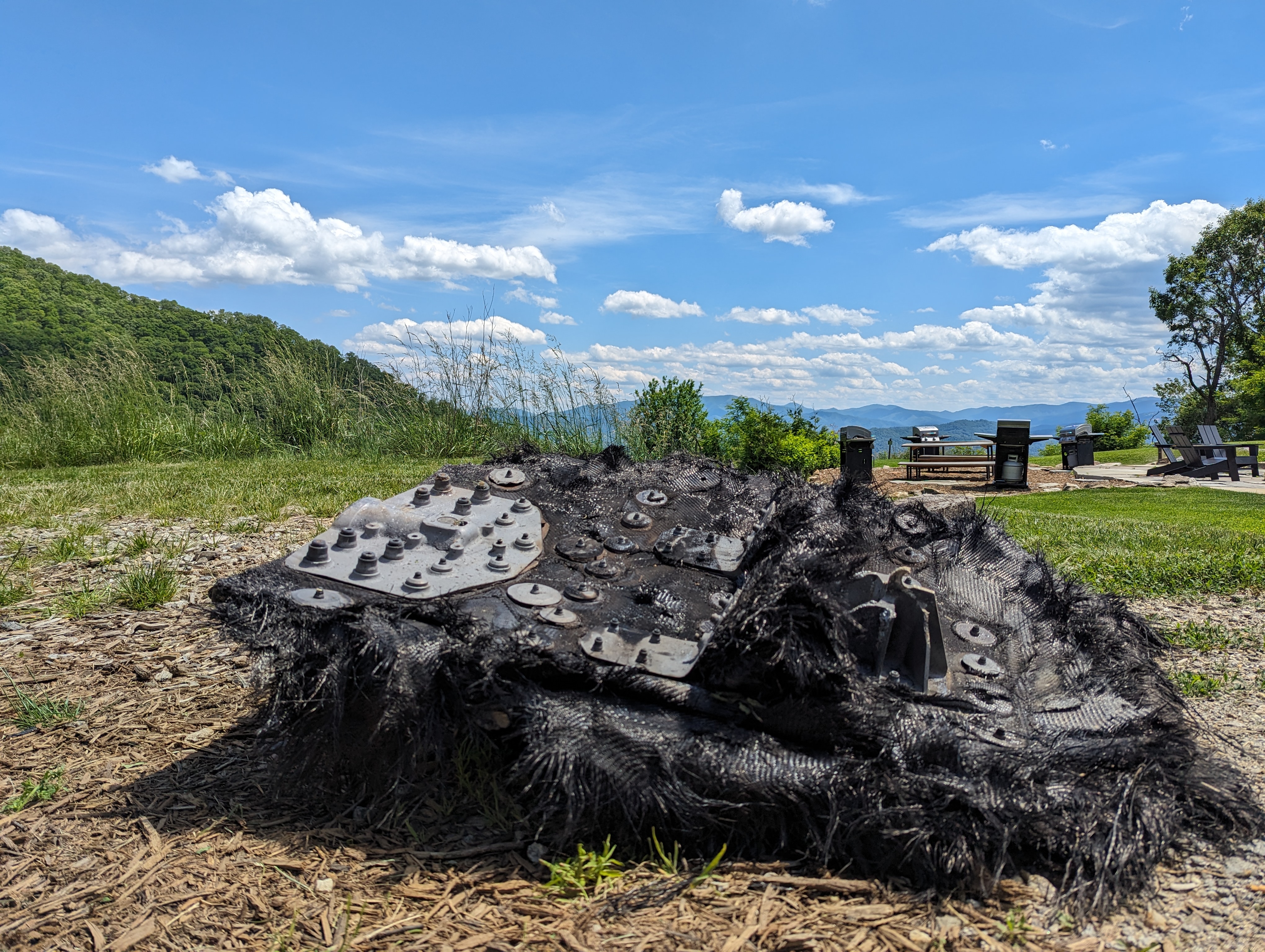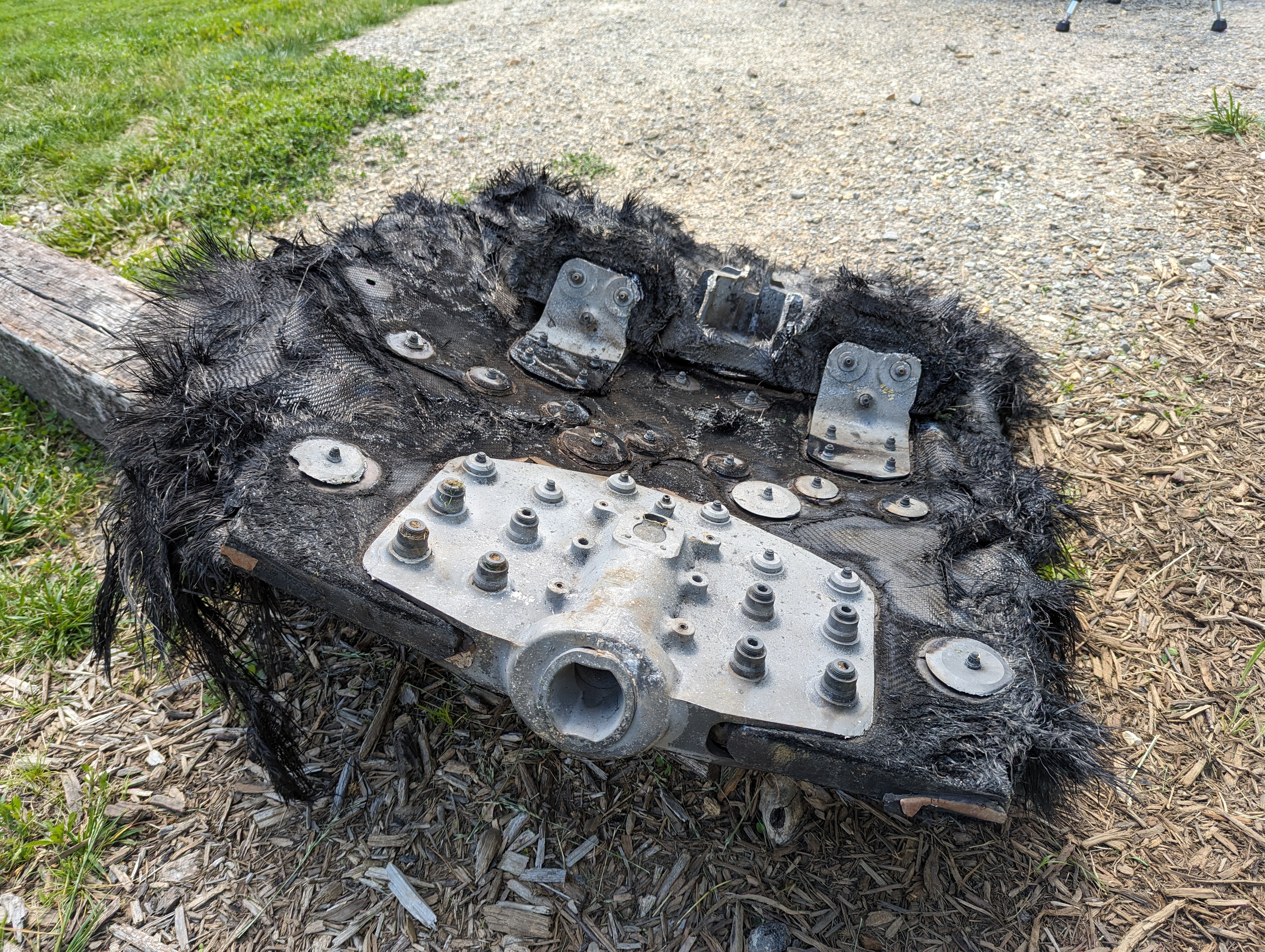
NASA has confirmed that pieces of debris found throughout the mountains of North Carolina are the remnants of SpaceX Crew Dragon hardware that reentered the atmosphere in May 2024.
The largest piece of debris was found along a walking trail of a mountaintop resort on May 22; it was about the size of a standard car hood and covered in a carbon fiber weave. In the weeks following that discovery, several smaller pieces were found in residents' yards throughout the region as well. A map posted to X by astronomer Jonathan McDowell that plotted the reentry of the SpaceX Crew-7 mission's "trunk," or service module, suggested this particular Crew Dragon hardware was likely responsible for the mess. However, it wasn't until June 20, 2024 that NASA confirmed the debris indeed came from a Crew Dragon spacecraft.
"SpaceX has confirmed the re-entry of Dragon spacecraft trunk hardware to NASA following its service missions to the International Space Station," a statement emailed to Western North Carolina journalist Justin Berger said.
The trunk, as SpaceX calls it, is an unpressurized section at the tail end of its Dragon spacecraft that has fins for aerodynamic control during emergency aborts, is able to carry cargo or small satellites, and is fitted with solar panels that provide power to the spacecraft when it is in flight or docked to the International Space Station.

NASA's statement confirming the source of the debris pointed out that the trunk's reentry over North Carolina wasn't the only recent example of a Dragon trunk surviving its fiery return through Earth's atmosphere.
"Most recently, the trunks that supported SpaceX's 30th commercial services resupply and Crew-7 missions re-entered over Saudi Arabia and North Carolina, respectively," the statement continues.

NASA's statement says the Crew Dragon trunk was predicted to burn up entirely upon reentry, but these and several other recent debris falls indicate this is clearly not the case.
"NASA and SpaceX will continue exploring additional solutions as we learn from the discovered debris," the statement adds.
A few other pieces of other similar-looking debris have been found in recent years that were believed to also be from SpaceX Dragon reentries. In May 2024, a large piece of debris was found in a farmer's field in Saskatchewan, Canada, and before that, another piece fell in the Australian outback in August 2022. "NASA is unaware of any structural damage or injuries resulting from these findings," the agency wrote.
Of note, NASA is currently facing a claim for financial compensation with relation to ISS-specific space debris that crashed into a Florida family home. That space junk wasn't associated with SpaceX hardware, but rather a battery pack jettisoned from the ISS that was originally supposed to burn up in Earth's atmosphere; the family is requesting the agency pay for damages. The outcome of this could also affect how both public and private space companies manage future space debris incidents.







